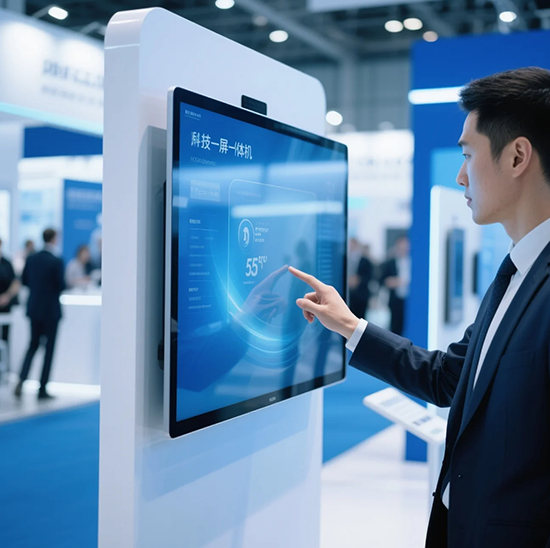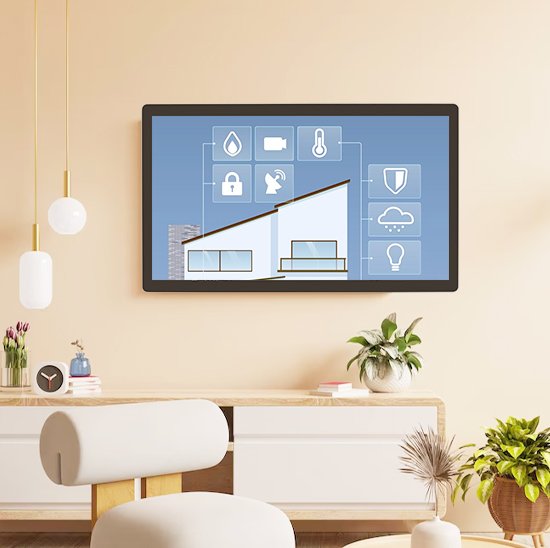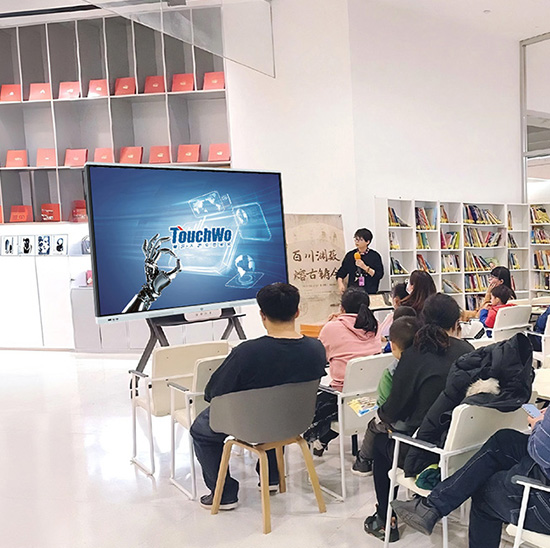In our everyday lives, we’re constantly seeking convenience and efficiency, whether we’re checking out at a store, looking for information in a public space, or getting health-related services. A wall mounted touch screen kiosk has become an essential tool for improving the customer experience and streamlining business operations. In this blog, we’ll explore how these kiosks transform industries and discuss the key features and benefits you should consider when incorporating them into your business.
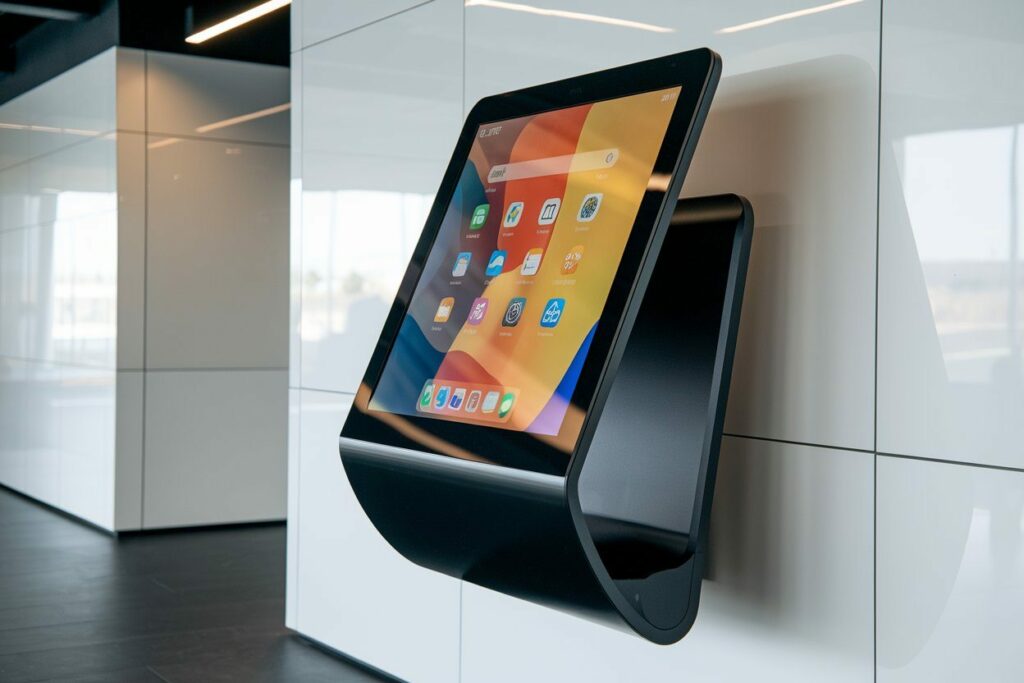
What is a Wall Mounted Touch Screen Kiosk?
A wall-mounted touch screen kiosk is a compact, interactive device that is securely fixed to a wall for easy access by customers or users. It serves various purposes, such as providing information, facilitating transactions, or delivering services. These kiosks are ideal for locations where space is limited but a high level of interactivity is required.
Historically, kiosks started as simple information boards offering basic data. However, as technology advanced, they evolved into AI-integrated smart systems capable of handling complex tasks. Modern wall mount touch screen monitors now feature high-definition displays, intuitive touch interfaces, and seamless connectivity to databases and networks, making them more powerful and versatile than ever before.
Key Industries Benefiting from Wall Mounted Kiosks
As wall-mounted kiosks continue to advance, their application across various industries has become increasingly significant. By offering tailored solutions, kiosks help businesses streamline operations, enhance customer experiences, and improve efficiency. Below are some key industries benefiting from this technology:
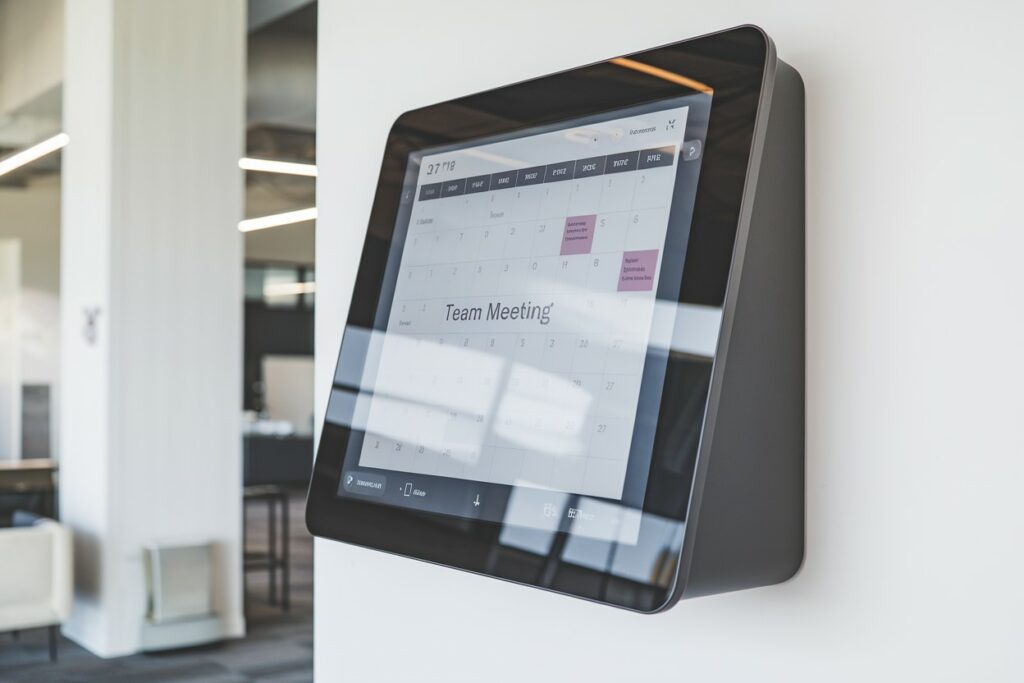
Retail & Hospitality
In retail and hospitality, wall-mounted kiosks are transforming the way businesses interact with customers. These kiosks enable self-checkout, allowing customers to bypass long lines, thus improving service speed. Product browsing is simplified, as users can easily search for items, check prices, and view detailed descriptions without waiting for staff. Additionally, personalized recommendations based on user preferences enhance the shopping experience, increasing sales and customer satisfaction.
Healthcare
Wall-mounted kiosks in healthcare settings serve multiple functions that streamline patient interactions. Patients can use kiosks for self-check-in, reducing wait times and easing the administrative burden on staff. Wayfinding features help visitors navigate large hospital complexes, ensuring they reach the right departments with ease. Telehealth access is another key benefit, enabling remote consultations and reducing the need for in-person visits. Kiosks also offer hygiene advantages with antimicrobial screens and contactless interactions, providing a safer, more hygienic option for patients and staff.
Corporate & Education
In corporate offices and educational institutions, wall-mounted kiosks simplify various administrative tasks. Visitor management systems enhance security and efficiency, enabling guests to check in independently and receive directions or passes. In conference rooms, kiosks allow for booking and managing reservations, streamlining meeting room scheduling. For universities, kiosks serve as valuable tools for campus navigation, helping students and visitors find their way around large campuses. Event schedules displayed on kiosks keep everyone informed of upcoming seminars, workshops, and gatherings.
Transportation & Public Spaces
Wall-mounted kiosks in transportation hubs and public spaces serve as essential tools for improving passenger experience. Kiosks facilitate ticketing, enabling travelers to purchase tickets or check-in for flights, trains, or buses without long waits. Real-time updates on schedules and delays keep passengers informed and help them plan their journeys more effectively. Multilingual support in kiosks ensures accessibility for a wide range of travelers, enhancing convenience and reducing confusion in busy transport terminals.
Technical Features to Look For (Professional Insights)
When selecting a wall-mounted touch screen kiosk, you should focus on the key features that align with your business needs to ensure efficiency and durability. Here’s what you should consider for optimal performance.
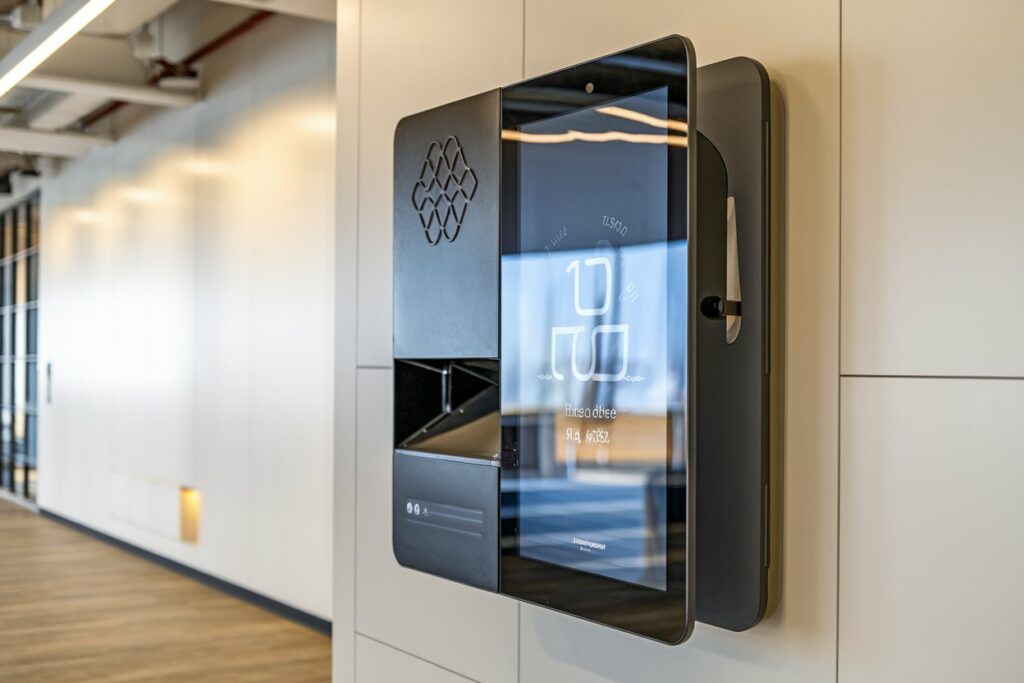
Hardware Specifications
- Screen Size & Resolution: For your wall-mounted touch screen display, choose sizes between 22” to 55” with Full HD or 4K resolution to ensure clarity and detailed visuals, especially for high-traffic or outdoor use.
- Sunlight-Readable Displays: Make sure the display is sunlight-readable if it’s used in bright environments or outdoor areas. This ensures content remains visible under various lighting conditions.
- Touch Technology: Infrared (IR) screens are budget-friendly but can be less responsive in high-traffic areas. Capacitive touch screens offer more precision and speed, ideal for locations with frequent interaction.
- Durability: You can choose kiosks with IP65-rated enclosures for dust and water resistance. Vandal-resistant glass ensures the kiosk remains operational, even in public or high-impact environments.
Software & Integration
- CMS, POS & CRM Compatibility: Your kiosk should easily integrate with existing content management, point-of-sale, and CRM systems, helping streamline operations and data management.
- Cloud-Based Updates & Remote Monitoring: You may opt for kiosks with cloud-based features to enable easy updates and real-time monitoring. This helps you manage your kiosk efficiently without requiring onsite interventions.
- Security Features: You may ensure the kiosk has robust security features like encryption, user authentication, and GDPR compliance to protect customer data and maintain trust.
ROI-Driven Benefits of Wall-Mounted Kiosks
As businesses look for cost-effective and efficient solutions, wall-mounted kiosks provide measurable returns on investment. A wall-mountable touch screen monitor enhances productivity while offering several key advantages that directly impact operations and customer engagement.
Operational Efficiency
Wall-mounted kiosks dramatically reduce staffing costs by automating repetitive tasks like customer check-ins. With a wall mountable touch screen monitor, customers can serve themselves, allowing staff to focus on more complex tasks. These kiosks can operate 24/7, providing constant service without requiring human intervention.
Enhanced Customer Experience
Kiosks offer faster service by eliminating wait times and enabling self-service options. Multilingual support makes it easier for customers from different backgrounds to interact with the system. Additionally, kiosks gather valuable data on user behavior, providing insights that help businesses refine their marketing strategies and improve customer satisfaction.
Scalability
Wall-mounted kiosks offer scalability through modular designs, making it easier to add new features or payment modules as needed. This flexibility ensures that as your business grows or your needs change, the kiosk system can evolve without requiring a complete overhaul.
How to Choose the Right Kiosk for Your Business?
Also, it’s important to carefully assess your needs and consider factors like functionality when selecting a kiosk. Here’s how you can make an informed decision.
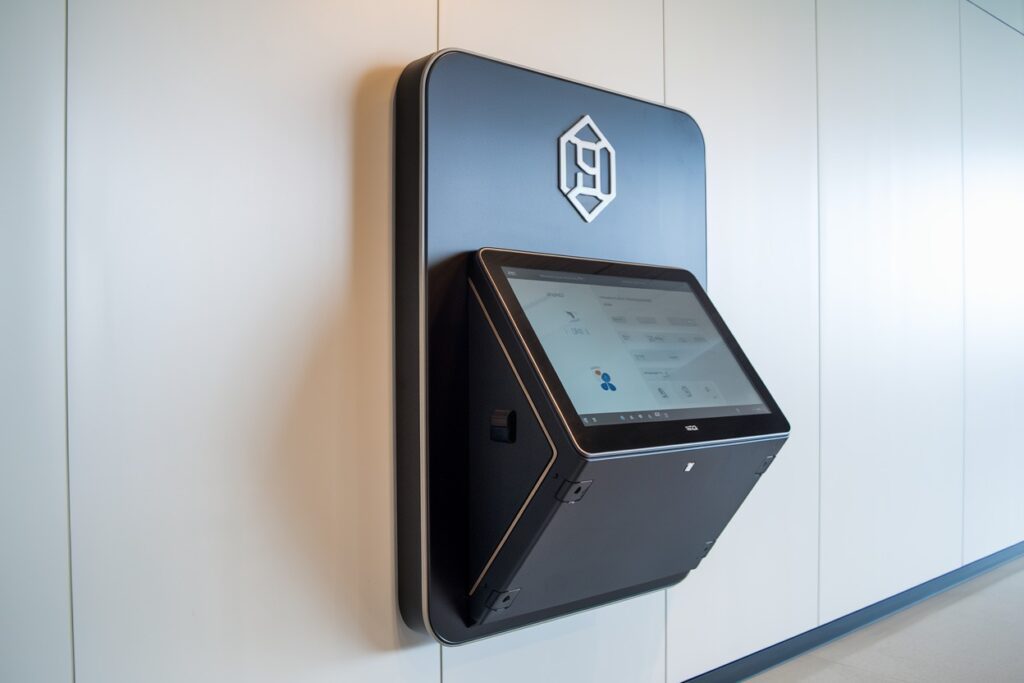
Assess Your Needs
Start by determining the use case for your kiosk: is it purely informational, transactional, or a hybrid? A wall-mounted touch screen monitor can serve various purposes, but understanding the primary function helps in selecting the right features. Additionally, conduct a foot traffic analysis—high-traffic areas require rugged hardware to withstand heavy use.
Budget Considerations
While the initial upfront costs of a kiosk may be significant, consider the long-term savings it offers in reduced staffing costs and operational efficiency. Don’t forget to factor in maintenance costs, software licensing, and update fees, as these can impact your overall budget.
Vendor Evaluation
When choosing a kiosk vendor, ensure they hold relevant certifications like ISO or UL for quality assurance and safety standards. Evaluate after-sales support options to ensure ongoing assistance, and consider whether they offer customization services to tailor the kiosk to your specific business needs.
Future Trends in Touch Screen Kiosk Technology
As technology continues to evolve, touch screen kiosks are becoming increasingly sophisticated, integrating new capabilities that drive innovation and enhance user experiences. Here are some future trends shaping the kiosk industry.
AI Integration
The integration of AI in kiosks is transforming how businesses interact with customers. Voice assistants can provide hands-free navigation, while predictive analytics tailors content based on customer behavior. Personalized recommendations enhance the overall user experience, making interactions more engaging and efficient.
Augmented Reality (AR)
Augmented Reality is opening up new possibilities for touch screen kiosks. Virtual try-ons for retail customers enable them to visualize products before purchasing, while interactive maps in tourism locations provide a more immersive and user-friendly experience. These AR applications are set to become a game-changer in customer engagement.
Sustainability
With growing environmental concerns, sustainability is becoming a key focus in kiosk technology. Solar-powered units are being developed to reduce energy consumption, while energy-efficient displays lower operational costs. These eco-friendly solutions help businesses meet sustainability goals while maintaining efficient and reliable kiosk performance.
Conclusion
The wall mounted touch screen kiosk offers numerous advantages, from boosting operational efficiency to enhancing the customer experience with interactive features. As businesses continue to embrace this technology, it’s clear that kiosks are shaping the future. Ready to explore how a kiosk can improve your business? Let’s dive in!
FAQs
Q1: How much does a wall-mounted kiosk cost?
The cost of a wall-mounted kiosk can vary significantly based on factors such as screen size, features, and customization. Prices generally range from a few hundred dollars for basic models to several thousand dollars for high-end, fully integrated kiosks.
Q2: Can kiosks be customized for branding?
Yes, kiosks can be customized with your business’s logo, colors, and user interface design to align with your brand’s identity. Many vendors like TouchWo offer customization options to ensure the kiosk reflects your company’s image.
Q3: What’s the average installation time?
Installation times vary depending on the complexity of the kiosk and the location. On average, installation can take anywhere from a few hours to a couple of days, including setup, testing, and integration with existing systems.

